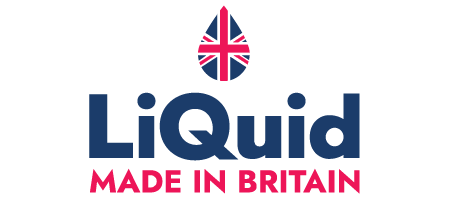Almost all e-liquids, and certainly all of those in our £1 vape juice ranges, contain the same four main ingredients:
- Propylene Glycol (PG)
- Vegetable Glycerol (VG)
- Nicotine (freebase or salt)
- Flavouring
When we combine these ingredients together in different amounts they create the different types of e-liquid you will have noticed out there – the two biggest influencers in any recipe however are PG and VG.
Depending on the ration of these two ingredients, you can create a 50-50 or ‘standard’ vape juice, or you can create an 80-20 or High-VG vape juice like a shortfill.
You can learn more about the ingredients we use when making our vape liquids in our guide, What makes and e-liquid? but below we will explore the ‘glue’ that holds all our recipes together: PG.

What is PG in Vaping?
- PG is a clear, tasteless, and colourless base material used in many common products including inhalers.
- PG is used in e-liquids as it is a very effective carrier for flavourings and nicotine, this means we can create much more stable mixtures, meaning your e-liquid will taste and perform the same with each batch.
- PG is thinner in consistency than VG and produces far less vapour when heated.
- 50/50 vape liquids are made using a higher volume of PG, allowing them to accommodate higher nicotine strengths including 3mg, 6mg, 12mg, or 18mg.
Is PG Safe?
Propylene Glycol is generally recognised as safe for human consumption by a number of international food authorities including the USA’s FDA (Food and Drug Administration) and our own UK FSA (Food Standards Agency).
It has a completely neutral taste which makes it perfect for vaping as it doesn’t interfere with our flavours, but actually helps make the end product safer. This is because PG acts as a very effective carrier agent, allowing all the different ingredients to mix together in a stable way, meaning nicotine and flavour levels are consistently balanced between each bottle produced form a bulk batch.
Examples of other products you may be more familiar with that also contain PG include:
- Seasoning blends for cooking
- Dried foods like soups and instant noodles
- Condiments like salad dressing
- Soft and alcoholic beverages
- Baking mixes for cakes, muffins, biscuits, etc…
- Medical and cosmetic products
PG is very versatile which is why it appears in so many products, using food as an example, PG can be:
- An Anti-caking agent: It helps prevent food components from sticking to one another and forming clumps, such as in dried soups or grated cheese.
- An Antioxidant: It extends the shelf life of foods by protecting them against deterioration caused by oxygen.
- A Carrier: It dissolves other food additives or nutrients to be used in processing, such as colours, flavours or antioxidants.
- A Dough strengthener: It modifies the starches and gluten in dough to make it more stable.
- An Emulsifier: It prevents food ingredients from separating, such as oil and vinegar in salad dressing.
- A Moisture preserver: It helps foods maintain a stable level of moisture and stops them from drying out. Examples include marshmallows, coconut flakes and nuts.
- A Processing aid: It is used to enhance the appeal or the use of a food, for example, to make a liquid clearer.
- A Stabilizer and thickener: It can be used to hold food components together or thicken them during and after processing.
- A Texturizer: It can change the appearance or mouthfeel of a food.
Where Does PG Come From?
PG is actually derived from petroleum – now, we know how that sounds, please don’t panic at reading this. You are certainly not at risk of finding any unleaded fuel in your next bottle of vape juice! Petroleum derived products are used by us every day, like Vaseline for example.
PG is a synthetic additive, and belongs to the same chemical group as alcohol. Despite being derived from petrochemicals it is non-toxic and very neutral in terms of potential harm, it exclusively acts to enhance other ingredients or components in a product and get them to perform better together.
It is not to be confused with a more toxic substance called ethylene glycol – some people get mixed up because both PG and ethylene glycol have been used to lower the melting point in antifreeze products. While both work, PG is safe to consume in other products like foods, whereas ethylene glycol is not.
This crossover has caused a few misplaced accusations to be thrown around over the years about the safety of vaping products. For the record, our whole range is held to exacting safety standards, including emissions results to ensure nothing dangerous is produced even when the e-liquid is heated up.

What is PG Vape Juice?
Any e-liquid with a balanced or slightly higher ration of PG is considered ‘50-50’. These juices are thinner than their HVG cousins, and typically come in 10ml bottles. Because it is a good carrier, the PG content allows for higher strengths to be mixed, ranging from nicotine free to 18mg.
They are best suited to lower-powered devices like the EDGE GO pod system, and while they produce less vapour, this makes them a discreet daily option for people wanting a simple solution to their 9-5 nicotine cravings.



